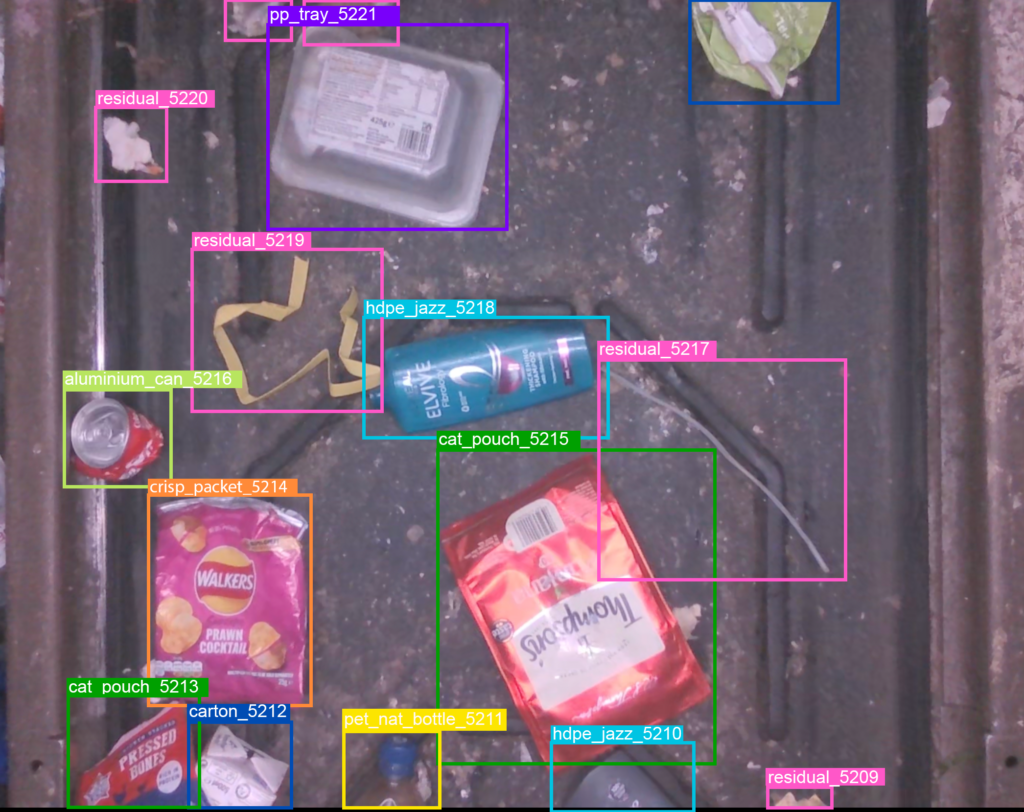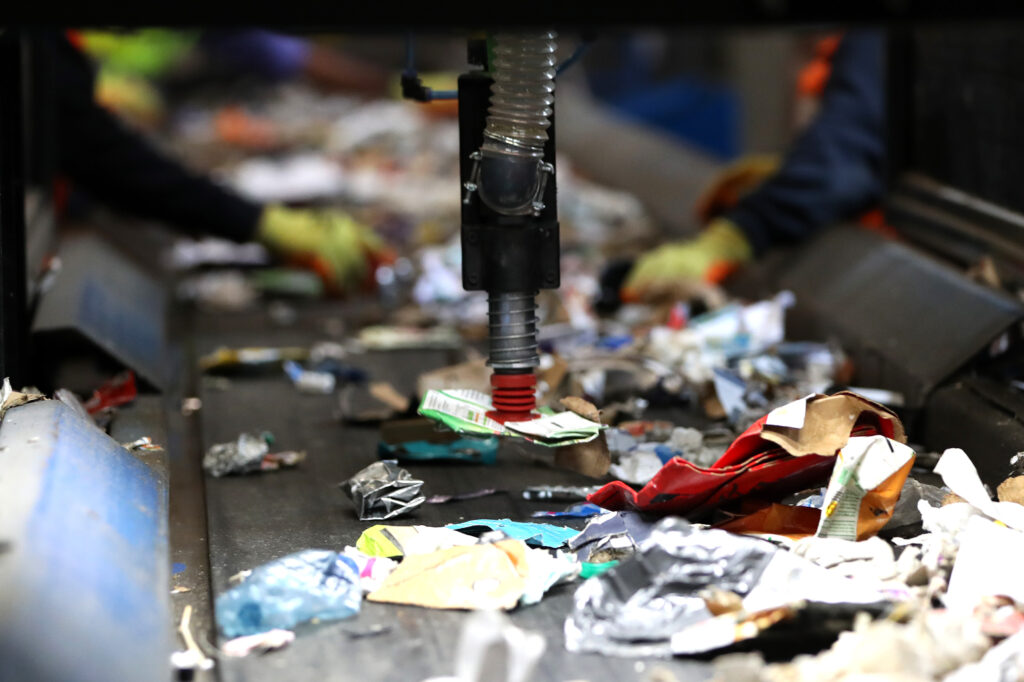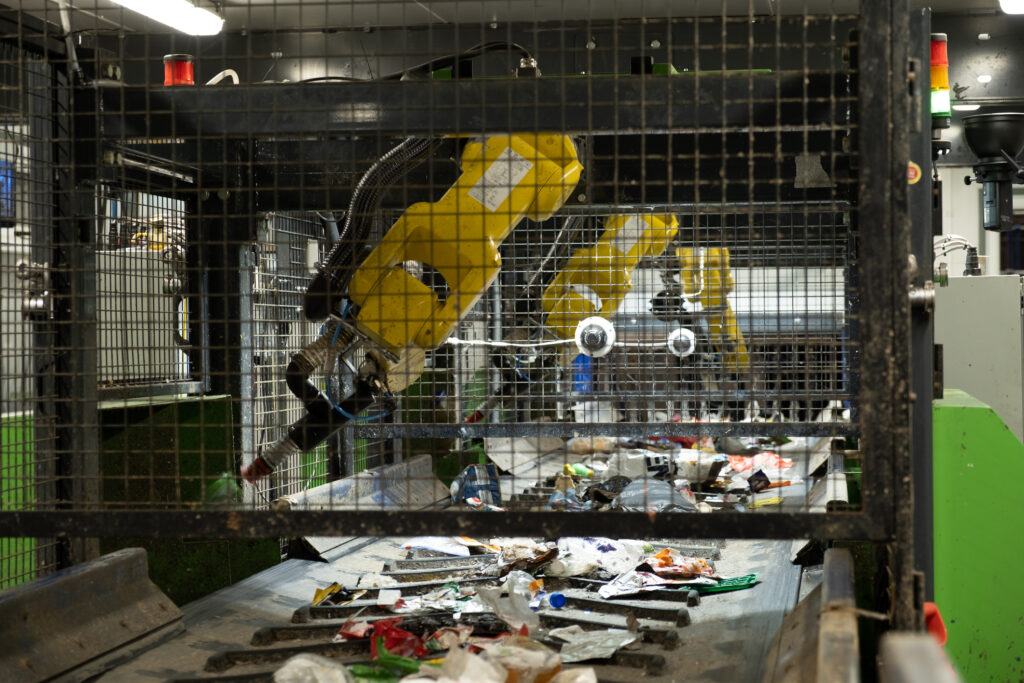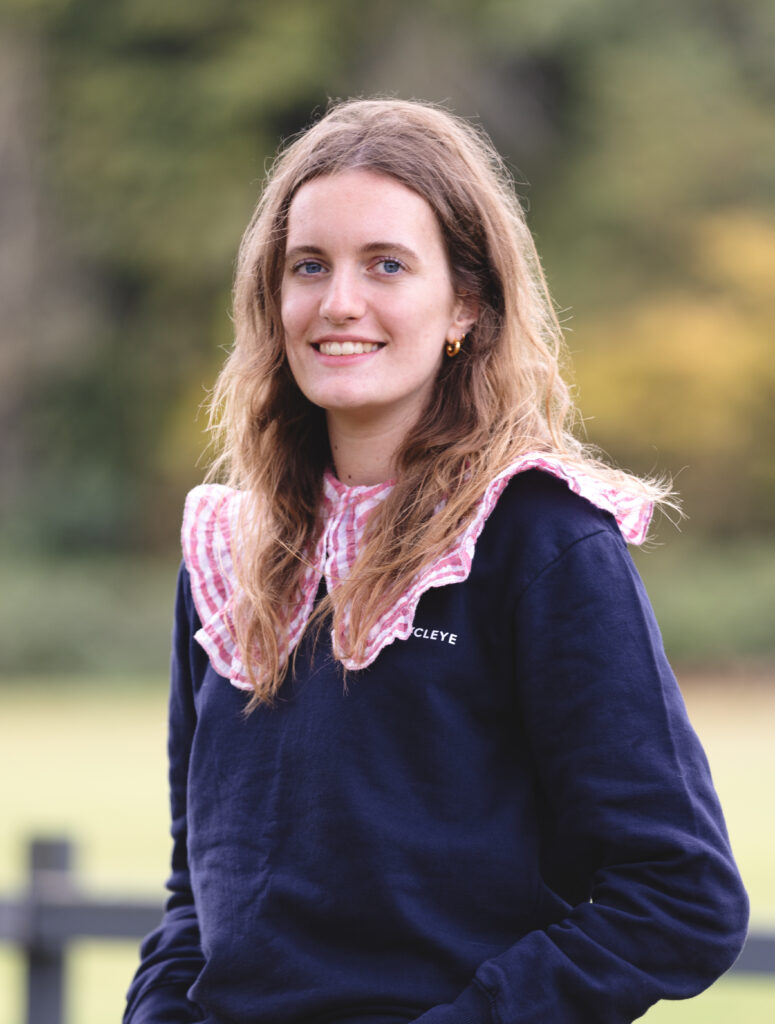Cartons, foils & co-mingling: in our latest blog, Ester Batchelor unpacks how AI is helping MRFs prepare for material stream changes following Defra’s introduction of Simpler Recycling in 2023.
What is Simpler Recycling?
In 2023, Defra (Department for Environment, Farming and Rural Affairs) introduced Simpler Recycling: a change in collections regulations with the aim to simplify and standardise recycling across England to tackle plateauing recycling rates. With household recycling rates remaining around 42% since 2021, Defra concluded that the variation of recycling bins and collection timetables across different local authorities and between households and workplaces was confusing, and hence obstructed increased recycling rates.
Thus, the department unveiled the Simpler Recycling plan, which, in England, will require:
- By 31st March 2025 – non-household premises with 10 or more employees to collect dry recyclable materials (glass, paper, card, cartons, metals, plastics) and separate food waste.
- By 31st March 2026 – all households to separate into a co-mingled dry recycling container (glass, paper, card, cartons, metals, plastics) and a food waste container, collected weekly.
- By 31st March 2027 – plastic film packaging and plastic bags to be included in recyclables for both households and non-households. Dry recyclable and food waste separation also becomes mandatory for non-household premises with less than 10 employees.
The following materials will be collected within the dry mixed recyclable stream:
Glass:
- glass packaging including bottles and jars
Metal:
- steel and aluminium tins and cans
- steel and aluminium aerosols
- aluminium foil
- aluminium food trays
- steel and aluminium jars and bottle lids
- aluminium tubes
Plastic:
- PET, rPET, PP and HDPE bottles
- PET, rPET, PP and HDPE pots, tubs and trays
- PE and PP plastic tubes larger than 50mm x 50mm
- cartons for food, drink and other liquids, including aseptic and chilled cartons
- plastic film packaging and plastic bags made of mono-PE, mono-PP and mixed polyolefins PE and PP (from 31 March 2027)
Paper and card:
All paper and card except:
- paper and card that contains glitter or foil
- paper that is laminated
- stickers and sticky paper
- padded lined envelopes
- paperback and hardback books
- wallpaper
The details of separation and collection are still to be defined and announced by Defra.
Whilst Simpler Recycling may increase collection rates of recyclables, establishing sustainable recycling rates means items also need to be sorted accurately in MRFs and reprocessed into quality materials by recyclers.
So, how will the policy change impact MRF waste streams? And how can AI support adaptation to these changes?
1. Foils, trays & films
The change: The broader range of materials collected under the policy means that MRF streams will comprise more variation in value of items. For example, in councils where foil was not previously collected, the aluminium stream will now contain lower value foils and trays, which often contain organics, as well as aerosols and high value beverage cans. Therefore, to maintain quality of aluminium output, MRFs will need to extract the cans to be baled as pure high value aluminium and bale the lower value aluminium separately.
The challenge: This is difficult with existing separation technologies such as those leveraging near-infrared (NIR) sensors because they perform a material-based sort using light refraction, so cannot differentiate between different objects made of the same material e.g. PET tray vs bottle; aluminium foil vs can.
AI’s solution: AI sensors use a camera and machine learning algorithms to detect items based on visual characteristics, seeing everything that the human eye sees. This means computer vision can identify and categorise different objects of the same material, and thus sort accordingly.
e.g. our customer Urbaser in Valencia installed a Recycleye QualiBot® to extract aluminium cans and PET bottles from a residue line, leaving behind lower value foils, films and trays – a popular application amongst MRFs.

2. Liquid cartons
The change: Collection of liquid cartons will be mandatory within the plastic stream of the dry mixed recyclables from households and businesses. Currently, the multi-material nature of the cartons means they are not collected for recycling in some areas, and in others they vary from being considered as part of the aluminium, plastic, or fibre streams.
The challenge: The combination of card, aluminium foil and plastic film layers of cartons means that material-based sensors (e.g. NIR) also struggle to categorise them, often concluding they are one of their multiple composites. This contaminates aluminium and fibre streams, and often requires manual pickers to extract them rather than machines, which can be costly.
AI’s solution: AI is unaffected by multi-materials and detects them accurately based on characteristics such as shape, lid or how they have folded. Our computer vision identifies liquid cartons from any other material or item with a high accuracy.
We have partnered with ACE UK (The Alliance for Beverage Cartons and the Environment) and carton manufacturers to install Recycleye QualiBot® units to pick cartons at MRFs such as Veolia Southwark (aluminium line) and Panda Ireland (residue line), whilst Bryson Recycling also purchased a unit to perform the same task on its fibre line.

3. Co-mingled DMR stream
The change: Specifics are still to be defined by Defra, but it is possible that collections in all areas will move to a single co-mingled dry mixed recyclables container. In MRFs that handle material from councils currently collecting DMR separated into several bins, this will require reconfiguration of the sorting lines to facilitate increased separation.
The challenge: The uncertainty surrounding how and when composition and throughput of lines will change means it’s difficult for MRFs to begin preparing plant redesign. Traditional technology requires different sensors to detect different materials, ie NIR for plastics and paper, VIS for colours, EM for metals and LASER for black plastics. Often, only a binary sort is performed by each machine, meaning materials can only be separated into 2 categories at a time. Thus, MRFs may need an extensive and expensive reconfiguration of machines to adapt to increased mixing of material in streams.
AI’s solution: Computer vision can detect every material class that the human eye can, whilst robotic pickers can sort into 4 categories simultaneously, leaving a fifth on the belt. Therefore, AI-powered robotics can support MRFs by automating the ‘last-chance’ quality control lines of mixed recyclable streams – extracting aluminium cans, PET bottles, fibre and HDPE containers (or whatever categories suit the plant) in a single sort.
AI is also a flexible technology, so if there are significant changes in stream composition, the machine learning model powering the sorting system can be retrained to align with altered material proportions. For example, Cireco Scotland reprogrammed its system of 3 Recycleye QualiBot® units to all pick aluminium cans as well as PET bottles, following an increase in cans in the stream, whereas previously only one unit was targeting aluminium. This flexibility is an important tool for MRFs that are upgrading sorting processes with uncertainty about what streams will look like in the future.

AI-powered robotic pickers are retrofittable over existing lines at low cost during plant downtime on a single weekend. This enables MRFs to absorb new material streams without expensive plant renovations and reconfiguration.
Installing intelligent sorting systems also provides the plant operations team with omniscient visibility as to how their stream composition is changing, and how well their machines are adapting. The AI sensor scans 100% of items on the conveyor belt, and outputs composition and machine performance information in a near-real time dashboard so that purity of output can be tracked. Vision systems can be installed after sorting hardware, giving transparency on material recovery, ensuring decisions around adapting to Simpler Recycling are informed by exhaustive data.
Confirmed and unconfirmed changes to MRF material streams as a result of Simpler Recycling demand sorting technologies that can pick a new range of items and are flexible to adapt to compositional flux. Ambiguity surrounding how quickly material streams will transition across the 3 years of policy implementation render expensive plant renovations unattractive and retrofittable solutions a more apt response.
AI-powered sorting offers unprecedented granularity, visibility, flexibility and retrofittability – deeming it the ultimate tool for MRFs to adjust to changes introduced by Simpler Recycling.

Ester Batchelor is Head of Marketing at Recycleye, and partners with our Regional Technical Sales Managers to advise waste management facilities on leveraging AI to increase recovery and purity amidst policy change across the UK, Ireland, France, Benelux, Italy, Iberia and DACH.